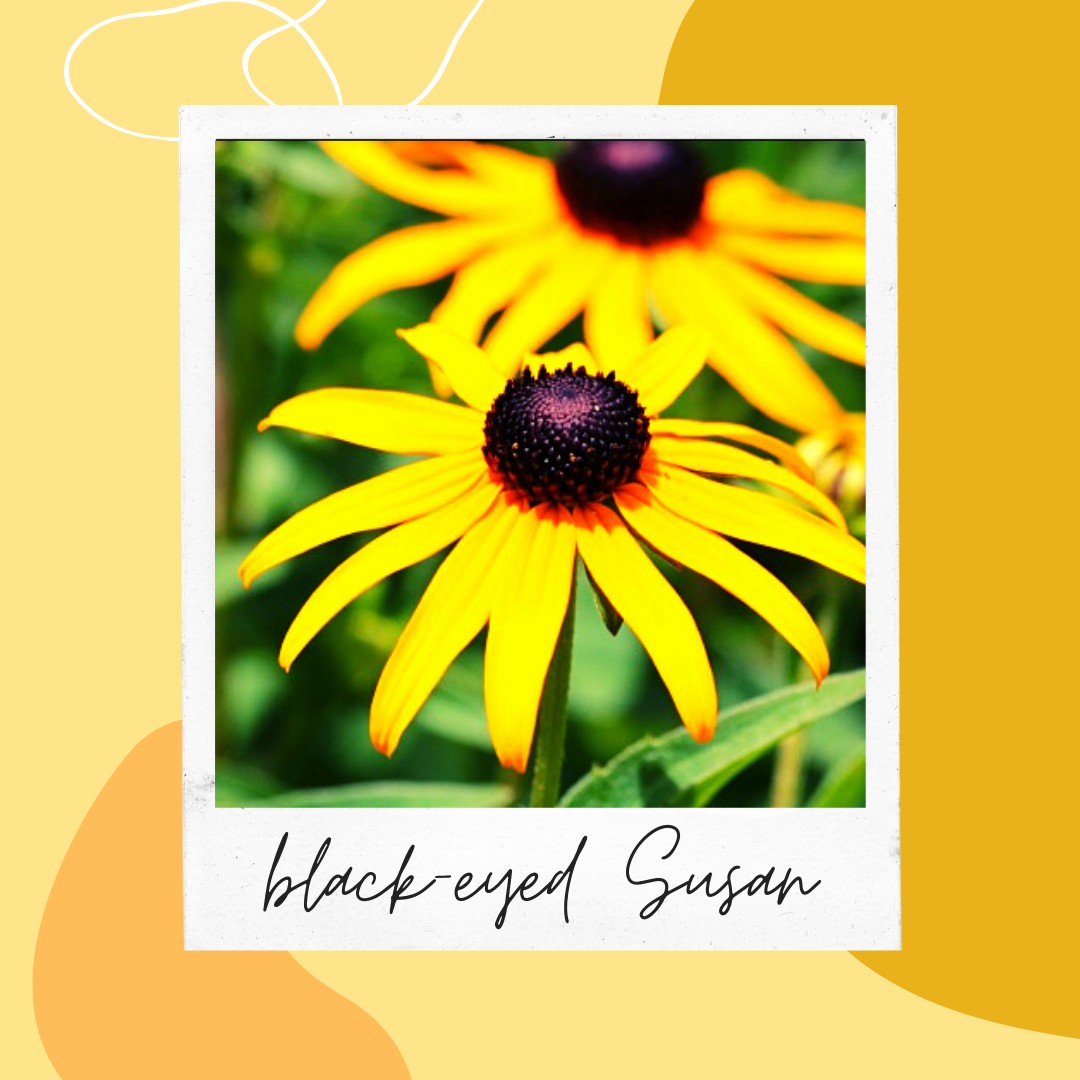
Download .pdf version
While the month of August summons cooler weather, another planting season begins for many iconic species, including black-eyed Susan. One of the most popular wildflowers, black-eyed Susan is native to North America. This annual and winter hardy forb can be found sprouting year-round, across the continent, and blooming with golden, daisy-like petals.
Rudbeckia hirta is often found blanketing fields, open woods, roadsides, waste spaces, and prairies. The species name “hirta” is Latin for “hairy” and refers to the hairy bristles along the stems and leaves.
The genus is named after the Rudbeck family, which included a famous Swedish father and son both named Olof. Olof the Elder was a renowned scientist across the fields of anatomy, linguistics, and botany, and he served on Queen Christina’s celebrity court in Sweden. Olof the Elder established the first botanical garden in Sweden at Uppsala, and Carolus Linneaus, the creator of binomial nomenclature and father of modern taxonomy, studied there under Olof the Younger. It turns out this weedy, waste space wildflower certainly has a rich and noble history!
The yellow, showy petals lead to a blackish-brown center, or the eye, of the flower. It is believed the wildflower was named after a poem by John Gay (1685-1732) titled “Black-Eyed Susan.” The poem tells a romantic story of Black-Eyed Susan, a Native American, who welcomed her Sweet William, an English colonist, back from an unexpectedly long trip on the high seas. The love story represents how the wildflowers sweet William (Dianthus barbatus) and black-eyed Susan (Rudbeckia hirta) bloom beautifully together, even though sweet William is not native to North America.
It was once believed that black-eyed Susan only grew in the Great Plains during the early colonial period, so there was some confusion about how the wildflower could have been named by early colonists. However, later research showed that black-eyed Susan grew in parts of Maryland where it now serves as the state flower. Medicinally, the root of black-eyed Susan can be steeped into a tea to help get over a cold. Juice from the root has been used to treat snakebites and earaches.
Black-eyed Susan’s versatility allows for spring or fall planting. The wildflower only needs to establish a root system before the weather becomes too hot or cold. While its resilience allows the wildflower to tolerate heat and drought, black-eyed Susan needs a well-drained soil in full sun. Once established, the wildflower is very manageable and blooms from early summer to fall. As a favorite for pollinator gardens, its sweet nectar entices bees and butterflies once other wildflowers have gone dormant for the year. It is important in pollinator habitats to have something blooming throughout the year so pollinators don’t go hungry!
Welcome the “second summer” into your garden space with black-eyed Susan. Perhaps she will bring good luck to you as she did to get her Sweet William to shore safely! Black-eyed Susan is available through the Richland Soil and Water Conservation District’s Seed Sanctuary program.
All in the downs, the fleet was moored,
Banners waving in the wind.
When Black-Eyed Susan came aboard,
and eyed the burly men.
"Tell me ye sailors, tell me true
Does my Sweet William sail with you?
An Excerpt from “Black-Eyed Susan” by John Gay
References: Lady Bird Johnson Wildflower Center, the Old Farmer’s Almanac, Missouri Botanical Garden, USDA, American Meadows
Download .pdf version
# # #
Conservation Districts are political subdivisions of state government under the local direction of five-member Boards of Commissioners. In South Carolina, Conservation District boundaries conform to County boundaries. The Richland Soil and Water Conservation District promotes the wise use and care of natural resources for long-term sustainability.
Contact
Richland Soil and Water Conservation District
2020 Hampton Street, Room 3063A
Columbia, SC 29204
Phone (803) 576-2080
Fax (803) 576-2088
E-mail soilandwater@rcgov.us
Facebook www.facebook.com/rswcd